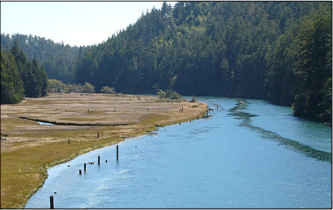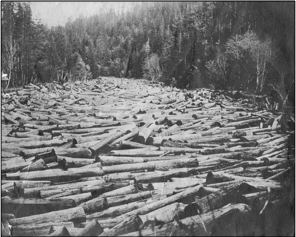From the First People to European settlers starting in 1850, and then hippies during the 1970s the relationship between people and land shows a pattern. This is a short chapter, post-able in 3 parts. Enjoy, comment if you like.
A sense of place is helpful in appreciating the feelings that both pioneer old-timers and immigrant back-to-landers developed toward Comptche. Mendocino County history is better understood in cycles that spiral, rather than a liner progression. Looking at cycles, patterns, and contrasts shows why people are attracted to settle in the region. Livelihoods are linked to natural resources, and this determines one’s ability to remain.
Mendocino County history tells the story of the emergence and development of the region’s civil commons. The areas and resources first used by the native people became the same lands and resources valued by succeeding generations: redwood forests, the Pacific Ocean, waterways, travel routes, grasslands, wildlife.
Since time immemorial, first people of the north coast were Pomo. In the early 1800s Russians coexisted with the Pomo on the Coast between the early 1800s and 1840s. The historical Russian settlement of Fort Ross is a remaining glimpse of Russian settlers along the Redwood Coast. Coinciding with California’s 1850 statehood, the U.S. government expelled all Russian citizens.
The California Gold Rush of 1849 exposed the new state’s abundance of natural resources and opportunity, attracting immigrants who came with their timberland heritage and skills from Europe. Finland, Portugal, Germany, Italy—these countries were all once heavily forested, but war and industry consumed European forests and the vast woods were disappearing after WWI. With that resource gone, foresters migrated to the West. Chinese men were also among the region’s early immigrants, but they came alone because U.S. policies granted worker visas exclusive of women and children from China.
In the absence of towns and villages, early European immigrants lived in logging camps or set up communes based on ethnic heritage, language, and mode of exchange. Early logging practices required immense work and were destructive to waterways. After being felled by handsaws, logs were hauled by teams of horses or mules to riverbanks for transport to the sea.

At Burke’s tie camp in Comptche in the early 1900s, railroad ties were “split out”. Lumber was dragged by ox and mule teams to a hillside of damp clay where the ties slid down to Big River. Timber would pile up along the dry riverbed, which had been damned. At 2 a.m. water would be released from the dam and the rush of water carried the logs downstream to the mill in Mendocino, waiting at the mouth of Big River. The towns’s mill site was built on top of Buldam, a Pomo summer village site, where the river meets the ocean.
The region has many rivers leading to the sea. Comptche is situated near Big River which meets the ocean at Mendocino. Before railroads, the rivers were harnessed to carry logs to the sea. All along the coastal redwood region, seemingly endless procession of logs floated downstream to the millponds situated at the headwaters of rivers. Hydro powered sawmills cut logs into lumber, which was loaded onto schooners, then transferred to steamships bound for San Francisco. After the San Francisco Earthquake of 1906, Mendocino County lumber helped to rebuild the city. By then, California’s north coast timber industry was a major player in world trade.
The values of land and resources change by orientation of the people dwelling there. For a long time, Pomo were part of Nature, their subsistence was integral with the land. In the mid-1800s, people separated from Nature by valuing her parts. Forest and ocean became valued as resources, fisheries and timber were industrialized. As nature and her resources began to dwindle, change came again to the region the 1970s, with back-to-the-landers who valued Mother Nature with reverence, as a way to return to ourselves.
Change today continues the challenging relationship between people and places of Mendocino County. Old growth redwoods are rare, some are drive-thru tourist attractions. Once abundant abalone have been stripped from the rocky headlands and their harvest is now closed. People fight over fish and trees as the industrial PR war pits “family wage jobs” against radical environmental defenders.
As part of the public commons, the river is common ground. All stripes of folks go there to fish, swim and enjoy the outdoors. Today, in 2024, the rivers are again changed. When locals stop by the river with their kids to fish on the way to school, as they did growing up “back in the day,” they are finding the same thing: Nothing. The rivers are bare.

Up next: Before Immigrants: Pomo of California’s North Coast
References for this Post:
CasparCommons.org, 2011
Kelley House Museum, 2011
Mendocino Historical Society, 1967
Mendocino Redwood Company, 2012
Thompson, Elsa, 1973
Yoneda, Sylvia, 1988








